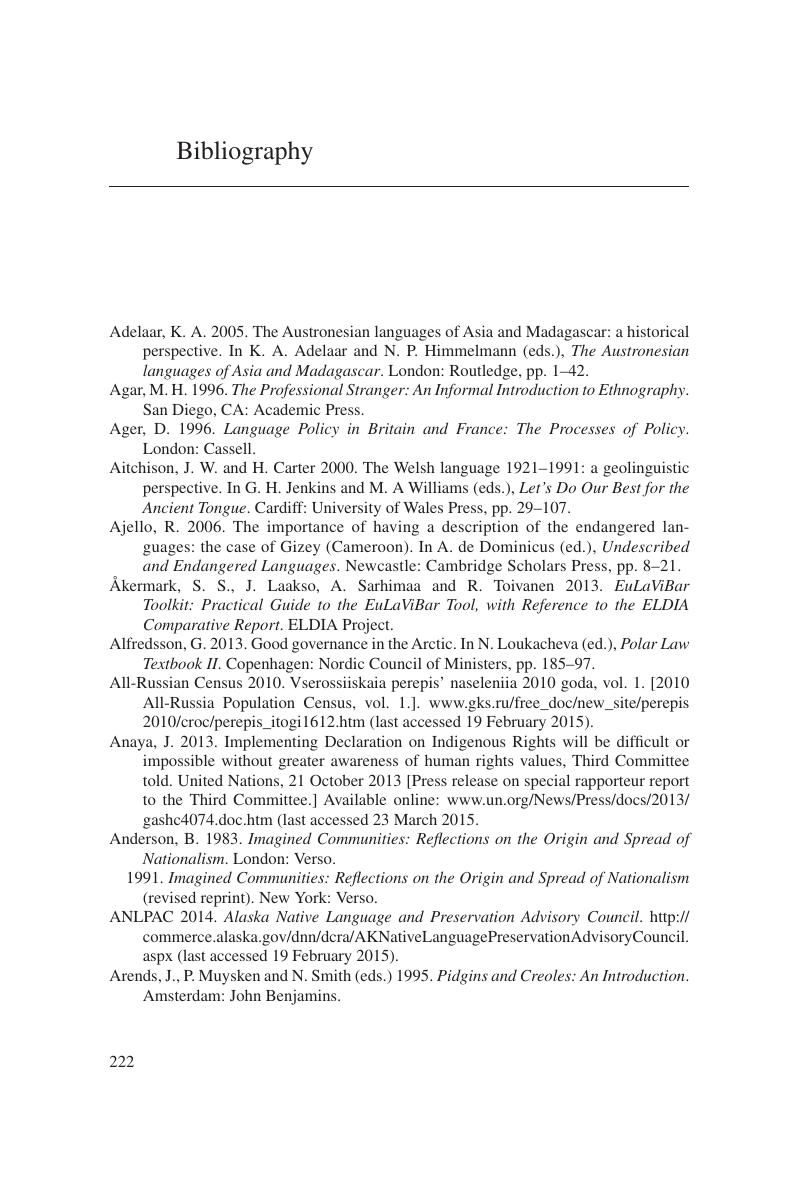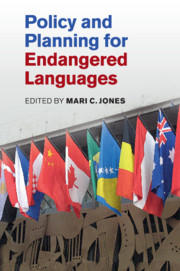Book contents
- Policy and Planning for Endangered Languages
- Dedication
- Policy and Planning for Endangered Languages
- Copyright page
- Contents
- Figures
- Tables
- Contributors
- Preface
- 1 Leveraging language policy to effect change in the Arctic
- 2 Maintaining and revitalising the indigenous endangered languages of Borneo
- 3 Language ideologies, practices and policies in Kanaky/New Caledonia
- 4 Immersion education and the revitalisation of Breton and Gaelic as community languages
- 5 Asset, affiliation, anxiety?
- 6 From policies to practice
- 7 Transitional turtle soup
- 8 Value, status, language policy and the language plan
- 9 Assessing the effect of official recognition on the vitality of endangered languages
- 10 Young Kashubs and language policy
- 11 Confrontation and language policy
- 12 Occitan
- 13 ‘To be a good westerner, you need to know where you come from’
- 14 Rediscovering history and the Cornish revival
- Bibliography
- Index
- References
Bibliography
Published online by Cambridge University Press: 05 August 2015
- Policy and Planning for Endangered Languages
- Dedication
- Policy and Planning for Endangered Languages
- Copyright page
- Contents
- Figures
- Tables
- Contributors
- Preface
- 1 Leveraging language policy to effect change in the Arctic
- 2 Maintaining and revitalising the indigenous endangered languages of Borneo
- 3 Language ideologies, practices and policies in Kanaky/New Caledonia
- 4 Immersion education and the revitalisation of Breton and Gaelic as community languages
- 5 Asset, affiliation, anxiety?
- 6 From policies to practice
- 7 Transitional turtle soup
- 8 Value, status, language policy and the language plan
- 9 Assessing the effect of official recognition on the vitality of endangered languages
- 10 Young Kashubs and language policy
- 11 Confrontation and language policy
- 12 Occitan
- 13 ‘To be a good westerner, you need to know where you come from’
- 14 Rediscovering history and the Cornish revival
- Bibliography
- Index
- References
Summary

- Type
- Chapter
- Information
- Policy and Planning for Endangered Languages , pp. 222 - 247Publisher: Cambridge University PressPrint publication year: 2015
References
- 1
- Cited by

